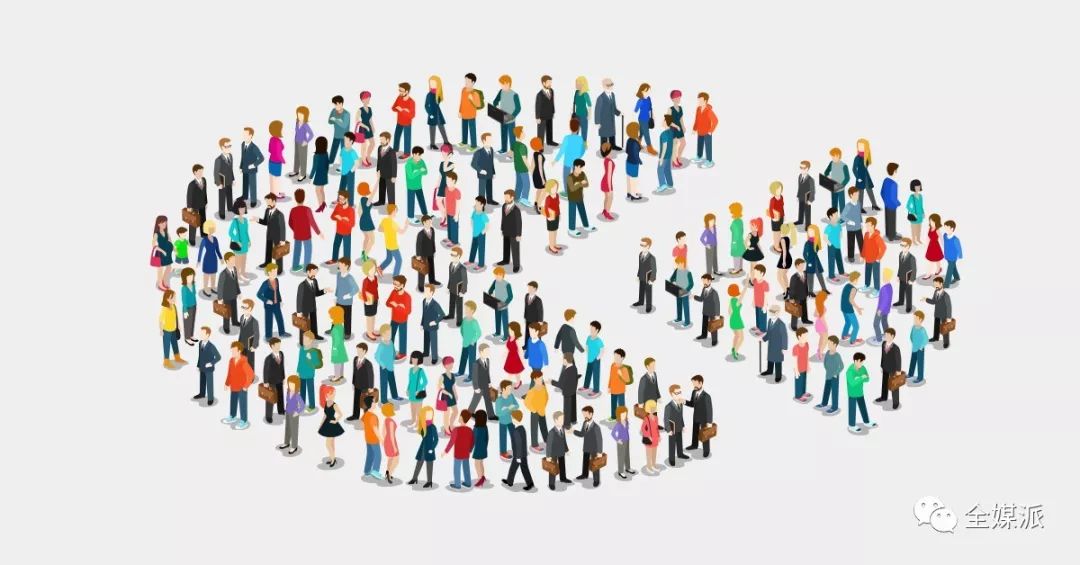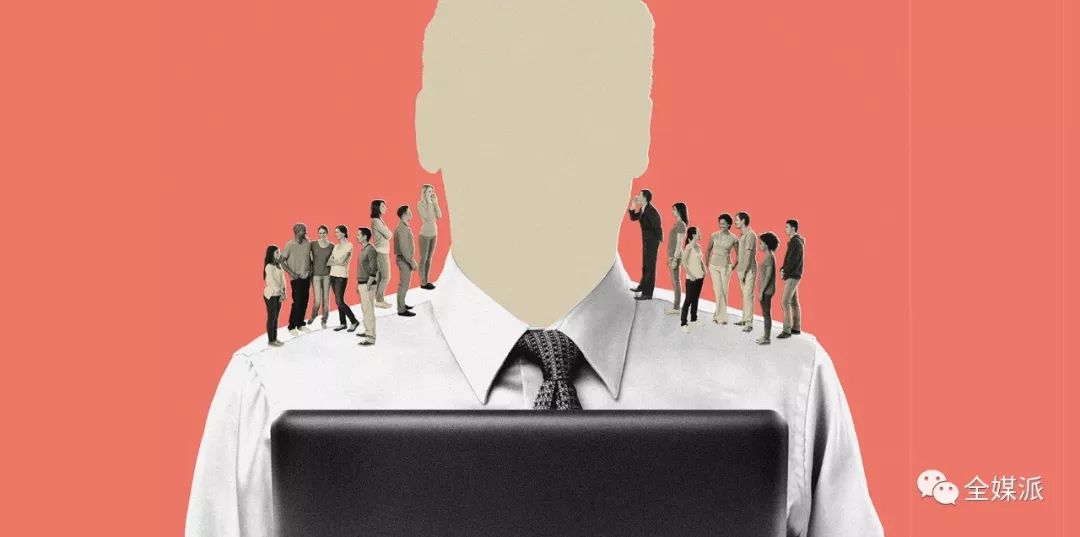“The most interesting pictures are spontaneously generated in people’s minds.”
Editor’s note: This article is from WeChat public account “All Media Party” (ID: quanmeipai), author Tencent Media.
“I have been thinking about who our audience should be. Most mainstream media tend to be an abstract idea, that no matter what kind of news you make, in theory anyone can consume it.”
—— Matt Pearce “Los Angeles Times” reporter
There has always been a “satire” in the newsroom:Although many of the journalists’ decisions have taken the audience into consideration, the final output of the news The audience is still out of focus and abstraction.
At first glance, journalists in the digital age should understand the audience more deeply than at any time in history:
In the past, journalists mainly understood their audiences based on their social circles. Now, journalists can use various digital tools to seek reader feedback, analyze reader behavior, and expand new channels of dialogue. The emergence of these new features is expected to “image” the “abstract” readers.
But is this really the case?
Columbia University’s Tow Center for Digital Journalism recently conducted an in-depth study to explore whether new tools in the digital age really affect the imagination of journalists And put forward some feasible ways to improve the audience awareness of the newsroom.
This issue of the whole media (ID:
quanmeipai) is a compilation of this research, hoping to help media practitioners narrow the gap between “imaginary audiences” and “real audiences”.

-
Audience in the mind: about the success or failure of the work
-
The relationship between the reporter and the audience: If you are just around the corner
-
The audience in the printing age imagines: What kinds of audiences do you have?
-
Recognition of the audience in the digital age: standing still?
-
Future Implications for Audience Imagination
The audience in the mind imagines:The success or failure of the work
The word ‘audience’ is ancient and powerful in the rhetorical tradition. It can be said to be of great significance. Although it makes us think we know what we are talking about, we don’t actually know it.” /p>
——DouglasB.Park
“If some of my assumptions don’t match your identity as a reader, I hope that you can find a way to temporarily play the role and attitude that I invite you to try, so that you can become a reader of this chapter.” /p>
—Donald L.Rubin
Just as journalists like to talk about the five “Ws” of news stories (who, who, where, when, why), journalism practices also depend on three important issues: Who am I writing for? Why is reading important to them? What do they think is interesting?
However, it is obviously impossible for reporters to throw these questions directly to the reader, so the answer is based on the reporter’s own guess,< Strong> and thus affects many of the choices they make, including topic selection, reporting, content, etc..
But understanding the audience is not a small problem: not onlyauthors and readers are separated in time and space, and the potential readers of the work are large and diverse . So how do experienced authors use existing long-term memories, first-hand knowledgeKnowledge and existing practices to construct a readership image? Generally speaking, this process takes place in the subconscious, which in turn forms a person’s “intuition.”
What is the audience? ?
When Franklin used “Audience” as a synonym for “Readership” in his novels, it opened up the new usage of the word “Audience” and is in today’s media industry. Has been widely used.
In history, Audience only refers to groups that can hear the speaker, and has nothing to do with written text. Even today, the definition of Audience is based on auditory behavior in most scenarios.
In fact, the difference between Readership and Audience is the same as the difference between Hearing and Listening: the former is passive; the latter carries the behavioral or emotional response of the subject, emphasizing the storyteller Establishing a connection with the recipient is more inclined to an “interactive” behavior.
Audience is now a hot topic in digital media, but its meaning varies from subject to subject
. For the media, it represents potential value; for advertisers, it refers to customers who can pay for advertising; for journalists, although it is close to Readership, it is still difficult to understand in many respects. the concept of.
Difficult audience perception
“The real environment is too large, too complex, too short, we have no ability to handle such a subtle and changeable environment. In this way In the environment, we need to refactor it in a simpler way. Just like before going around the world, we must first have a world map.”—Walter Lippman
Audience – not only includes existing readers,It also includes those who spend more time on the news because of the strong appeal of news stories – the ultimate goal of all media nowadays.
The philosopher Walter Ong once wrote in his article “The writer’s reader is always fictional” (Writer’
s Audience is Always a Fiction)
Speaking and writing are essentially different activities
.
The author’s advantage is much smaller than the speaker’s.
Speakers can interact directly with the audience during the course of their behavior, assess their responses in real time, and adjust the content or style of the presentation accordingly. In contrast, writing, like reading, is a lonely process carried out by the subject, even an activity that “needs some degree of avoidance”. When you sit alone in front of the keyboard, writers must find fascinating ways to tell stories, but they don’t know who their readers are..
So, many of the decisions made by the writer are based on empirical factors such as long-term memory, habits used in genre, imaginative perceptions of reader responses, etc.. Thus, the success of writing depends largely on whether they can accurately predict how the work will resonate with the imaginary audience. The key difficulty is that these authors did not exist at the time of writing this article.
So, familiar The advice of “knowing your audience” is actually a paradox, not to mention the fact that the number of news audiences is so large that it is even more difficult to speculate and understand the hidden needs and motivations of the audience.
Becoming a skilled writer requires fostering this innate readership. The study found that novice writers only focus on the topic at hand, and experienced writers are more likely to have a “psychological image of the reader” and “judge” the reader’s needs from their perception of reality.
Audience and successful news articles
It is worth noting that these imaginary readers are not the readers’ images based on superficial stereotypes. Instead, authors’ choices are defined by their ideal readers, reflecting the author’s personal ambitions. It is precisely because the accuracy of the reader’s guess ultimately determines the value of the finished work, so if their well-conceived stories can cater to the interests of the target audience and correctly predict the audience’s response, they can think that the story is a success. of. Otherwise, this work may not find any audience at all.
There are usually two types of audiences that are special. Here are two typical examples of news:
First, a writer may be under pressure to write an article that is particularly important to someone who may be a TA editor, a more senior practitioner, or an award. Leader of the committee;
Second, the environment in which a person’s work is published may cause the author to be biased against a certain class of readers. For example, an article commissioned by a publication is likely to target a particular type of reader.
So, not All audiences are treated equally. For many journalists, their communication goal is not always to reach as many people as possible, but to be as “right” as possible.
Audience in Intuition
“When the physical task of writing becomes automated, the author is no longer focused on writing, the text can be more adapted to the reader.” José Brandão Carvalho
Because of the complexity of “understanding the reader” itself, the “imaginary” reader image described by the writer is often vague and abstract. But for some experienced writers, it’s better to say that readers are in their minds, but they have become a kind of “muscle memory”, that is, some writers’ writing habits have passed. Years of writing experience, like the coordination of limbs to athletes.
In fact, creative behavior depends on external influences. Our conversation with another “self” is actually internalized by social factors and other people’s views.
But anyway, tobe aware that potential readership is still critical to writing, these areThe audience that exists in the mind is a key factor in news decision making.
The relationship between the reporter and the audience: If you are just around the corner
“The story should be more important to others than to journalists and have a certain influence This is a principle of journalism.” – Duy Linh Tu
There are two points in the reader’s opinion: On the one hand, since the ultimate goal of the news is to serve the public, understand your work and readers. The resonating point that can be generated is important; on the other hand, the reporter is worried about listening to the reader’s voice too closely, because it may affect his or her professional judgment on the value of the news. Therefore, although most newsrooms’ decisions take into account the needs of readers, consciously soliciting and integrating readers’ preferences is often resisted by journalists.
Why do journalists value Audience?
Serving the audience is the basic principle of journalism. This “altruism” is an important reason why many people become journalists
. A recent study has shown that many journalism students are looking for a career that is interesting, creative, selfless and reflects their love of writing, which to some extent proves the idealism of many journalists.
After entering the journalism industry, many practitioners found that it is not enough to tell an important story. The stories they tell must be attractive to readers.
Dwight DeWerth-Pallmeyer called “Resonance between Audience and Journalists” in a research report on Chicago news organizations in the late 1990s, “leading audiences to reporters.” I think that something important is of interest.” The true measure of influence is the response of the audience, that is, the report objectively motivates the audience to take action.
Overall, there are several reasons why journalists value their audience:
1. Get personal satisfaction
“Sense of accomplishment” is an important factor in motivating journalists’ work, and this sense of accomplishment may be because the works can bring happiness to the readers, or the language weapons from the hands can cause a certain degree of harm to the bad guys. All in all, if the work is read and has a certain influence, then this is a success; on the contrary, “neglected” will make the reporter feel discouraged.
2. Seek your own interests
Positive interaction with readers can also reflect the reader’s self-realization. In the printing era, in addition to the total circulation of the media, there is no way for people to know the exact number of readers, and between readers and journalists. Letters and exchanges are one of the most important ways for them to measure the value of their work.
Reporter and why Resist the audience?
1. Impair the accuracy of news value judgment
Reporters in the printing era are generally worried that too much attention to readers may affect their professional judgment on news—a tension between professional values and market orientation.
A reporter from the Chicago Tribune once called important but boring reports “oatmeal reports” because even if they taste bad, they can benefit people. . In the eyes of many journalists with noble thoughts, publish some “fun” rather than “important” things, and simply cater to the audience’s desire for entertainment, which actually violates the principle of journalism .
2. News standards are at risk of being forced to reduce
When discussing how to integrate audience needs into the news production process, it was pointed out that the tension between reader cognition and journalist cognition.
In the 1960s and 1970s, local TV news programs attempted to shift focus to an audience-oriented model, initially to avoid economists’ view of elitism
. At the time, the public services provided by some broadcasters only attracted 25% of the audience, and thisSome people have a good educational background. Therefore, some scholars will only pay attention to “a small group of middle and upper class people” in the broadcasting journalism, while ignoring the broader “ordinary audience”.
So, for these broadcasters, the solution is to “deep into the place where the masses are” and use audience research to drive news broadcasts. The combination of public services and broader audience coverage has driven the birth of audience-oriented news programs.
Of course, not everyone agrees with this approach. In the early 1990s, when the news broadcast industry included a large number of audience research into decision-making, the result was indeed an increase in ratings, but at the same time, the new program was rated as “a sensation”. Visible, Although the standard reduction will reach more audiences, when the ratings become the ultimate goal of news organizations, the types and methods of news reports will be affected: “fun” is better than “important” “The more the audience, the more “smart” the story is.
For journalists at the time, news judgment was not an abstract philosophy, but a part of the intrinsic value they could provide to readers. As Executive Editor of the Chicago Tribune said: “The reason why audiences buy newspapers is because they want me to tell them what is important.” Obviously, the editor explicitly refused to use audience feedback as part of his decision-making process. He believes that news can’t satisfy every audience.
3. Challenges in audience research
In the 1970s, Herbert Gans found in his groundbreaking research on the four major newsrooms that journalists had great doubts about whether audience research could help.
First,The results of the study were considered too focused on the case, independent of the regular workflow. As one editor said: “The research shows that the most popular cover is a beautiful girl with a red background, but how often will I publish such a cover?”
Second,Audience surveys may be rejected by editorial staff because they question the researcher’s motivation and are unwilling to accept any The judgment of the news and the autonomy of the profession were questioned by the investigation.
Audience imagination in the era of printing
“The way the world is imagined determines how people behave at a particular moment.”—Walter Lippmann
Research in the printing era shows that journalists’ audience perception is based on four groups:
-
Institutional audience, the target audience for the media
-
Editing an indoor audience
-
Informers
-
Friends and relatives
Institutional audience
Every media has its own “institutional audience,” which lays the foundation for each media organization and reflects the purpose of the media itself.
The target audience is selected by the editorial office and the business unit because it is not only subject to editing tasks, but also involves the economic benefits of conversion through subscriptions, advertising, or both. Therefore, “Institutional Audience” also represents a contract between the business unit and the newsroom, and has a high impact throughout the organization.
Audience in the newsroom
1.Edit
Although “institutional audience” defines the readership of journalists, in general, journalists will still serve their senior editors because this will greatly affect their career development. .
For editors, they will incorporate the needs of newspaper readers into their decisions and take what they thinkAn attractive way to edit news stories, and journalists have to learn to speculate on the preferences of superior editors.
Of course, sometimes the subordinates will counterattack the superiors. This debate between editors and journalists often occurs when there is a discrepancy between the two. The study found that the assumptions about audience preferences are often used by journalists to convince their editors to “believe in the value of a story”, when journalists argued which news should be reported, They are actually conveying a tacit understanding, even though the words may not explicitly talk about the audience, but “audience understanding” is clearly the cornerstone of the argument.
2. Colleagues and Peers
The press conference instinctively believes in the judgment of their colleagues and peers who write not only for the public but also for each other.
“News selection The topic will often serve as a tool to test the audience’s ideas
. In a large-scale daily reader attitude survey in 2000, it was found that at the daily news topic selection meeting, the editors’ task was not to choose a news-worthy topic, but to choose a most reader-friendly information for the headline layout. . As such, the discussion at the topic meeting is largely centered around the reactions of unknown readers. Generally speaking, people think that a good editor can judge what the reader wants. “If you can sell the story to the editor, you can sell the story to the reader.”
And sometimes,The experience of a colleague or peer may overwhelm his “intuition”. There was a case in the study: an editor instinctively rejected a report about a cat’s lack of sleep, but when his colleagues pointed out that their pet cat was difficult to stay awake, the editor immediately changed the decision. Moreover, many editors also regularly launch editorial surveys for specific genders or age groups in order to get inspired.
Event editor outdoor audience
1. Informer
Although informers who provide information to journalists are not the main readers of the news, they may be the most important readers of journalists.
As the person who knows the most about the incident, he has the right to confirm or overturn the core statement of the reporter from a factual point of view.
On the other hand, too close to the informant can hinder the independence of editing. American historian Robert Darnton wrote: “After more than a year of cooperation with journalists, journalists will be unconsciously influenced by their positions. Some newspapers are very wary of this, in order to prevent foreign correspondents from being affected by local informants. The stationed land is basically a three-year change.”
2. Friends and family
Amateurs outside of journalism are also important factors. In the late 1970s, most journalists thought their audience was “family, friends, neighbors, people they met at the party”. For journalists, it is easier to ask for information from trusted acquaintances than strangers who are close to the unknown. However, it should be noted that the amount of information from friends and family is not as good as feedback from professionals.
3. Strangers
Of course, journalists will also get a certain audience awareness from strangers from time to time. As Philip Schlesinger wrote in a study of BBC News: “Audience is still an abstract concept, but we can make the concept become a matter of occasional letters, phone calls, encounters in public places, etc. Be clearer.”
But in the eyes of reporters, the views of strangers are usually not as important as those they already know or trust. Strangers’ opinions are often overlooked, and this instinctive tendency toward “known” readers may bias other readers and influence journalists’ decisions in selecting, reporting, and writing.
3. Reader feedback
Reader feedback can also trigger very different reactions. Positive reader feedback is popular with journalists because it represents an influence on their work; at the same time, negative feedback does not seem to be particularly valuable, because criticism always exists regardless of news content, and their opinions It is always considered a minority and cannot represent all audiences.
A senior editor has said that more than a dozen complaints from readers are enough to overturn a decision;
Another senior editor admits that she likes to answer calls when she goes to work in the morning, even those calls she calls “crazy,” because the feedback they get from them makes them feel like they are not talking in a vacuum.
ReporterHow to imagine an audience
The “known” readers mentioned above constitute the memory of journalists for their known readers, but the proportion of these readers in the actual audience of the media is still small, then the reporters should What are the remaining “unknown” audiences to interpret?
1. The imaginary mass
A mysterious, large and vague group of “audiences”,Reporters sometimes show deliberate ignorance.
A senior TV news producer once said: “I know we have 20 million viewers, but I don’t know who they are. I don’t know what the audience wants, I don’t care.”
Another editor acknowledged: “If we want to take into account the feelings of 20 million readers, we will be stagnant.”
There are two perspectives on this issue that provide a compromising interpretation of the existence of an “unknown audience.” One explanation is that the media can hardly imagine the impact of their own reports on the masses. The public may not be the “mass” at all, but a collection of different groups and individuals.< Span>; Another explanation is assuming that a topic involves everyone, and that all story types have intrinsic supporters, so that the reporter can ignore the audience, and Think that every news story will attract some people.
2. Imaginary individuals
In the face of the unknown public, journalists often use “known” real audiences as the basis for their readership. When reporters are asked about the portrait of the reader, they can even describe the reader with amazing details.
magazine editor Gerald Mazorati described his readers as follows: “I think my reader is a woman in her 30s who is a lawyer, educator or businessman. She is busy with work, too Busy with family affairs, but on Sunday morning she will allow herself to spend an hour or so reading something unrelated to her work, or something unrelated to her child’s homework. She wants to immerse herself in a big story of eight or nine thousand words. My premonition is that she wants to read some real stories that can reflect her real life and let her see a complicated world.”
whether reasonable or not, These hypothetical audiences influence the decision-making of journalists in subtle and obvious ways.
When imagination and reality disagree
It is precisely because the rich and diverse imaginary audience is largely based on the personal perception of journalists, so people can’t help but ask; how high is their work matching the actual audience?
The target audience for the media tends to be biased towards elite readers,
In response, a senior editor of the newsroom has publicly expressed concern about the diversity of the work. He believes that the editor represents a homogeneous economic class who may be insensitive to the stories that the lower readers value.
In a television news study in 1984, K. Tim Wulfemeyer discovered that TV reporters didn’t actually know their audience: The reporters surveyed believed that the audience was most interested in reports on sex, crime and violence; the audience survey showed that they were most interested in reports on the economy, consumerism and education.
To what extent, now, the “unknown” readers of the printing era have become “forgotten” readers? The digital transformation in recent years seems to have brought a turning point to readers’ imagination. The traditional view is that tools in the digital age can help newsrooms to communicate with readers and measure reader behavior, but whether this is true What?
Changes in the imagination of the digital age: standing still?
“The audience is elusive, they are scattered over a wide geographical area, and those who try to understand and manage them can’t actually See them.”——James G. Webste
In the digital age, disruptive changes have pushed audience research into the spotlight. On the one hand, heavy commercial pressures have made news organizations use the audience as the basis for survival; at the same time, the digital platform provides a lot of data about the behavior of readers, and the media hopes to realize it.
At the same time, the original content and readership began to collapse: news no longer needs to be bundled for purchase and consumption, all news products can be sold as intended, News must be content or Product clear audience.
Thinking under the digital tool
The rise of digital media provides journalists with new ways to communicate with their audiences
: Obtained from the reader (directly with the reader) and obtained from the data (using analysis and statistical tools).
1. Get information from people
Although journalists have always had the opportunity to listen to and interact with readers, today’s new approach to digital technology has made readers’ perceptions more efficient, and readers are now more difficult to ignore. The more you come, the more you see it as part of your job.
For the news world, the social platform may constitute an “Echo Room” effect, and various voices are magnified here
Twitter has been criticized for reflecting the real-world social circle of journalists. A study has described the participation of political journalists on this platform as “extreme isolation and self-participation.” A study by the Pew Research Center in 2019 found that most of the posts on Twitter were actually published by relatively few users, and the demographics of these users clearly deviated from other groups.
Research findings,E-interaction becomes relatively easy when audience conversations are conducted in specific segments; media and audience through email or direct conversation The relationship has become more intimate.
Perhaps the “direct dialogue” approach will make the audience more effective. Many media organizations have begun to organize some formal readers’ meetings to allow readers to have more face-to-face contact with journalists.
The Huffington Post’s Listen to America project, launched in 2018, is designed to allow journalists to face up to unfamiliar readers and get more feedback from them, rather than sitting in the office. People to decide what is importantcontent.
2.Get information from data
In the digital age, the explosive growth of online audience data provides a new source of information for the media, allowing practitioners to accurately quantify audience behavior and ultimately serve the personalized upgrade of news products.
An academic journal has described the use of new digital tools for audience analysis: “Audience Information System All media workers are being guided to imagine audiences in a quantifiable data-driven way, the accuracy of science is placed on top of a vague impression.” So, through big data, the newsroom can directly understand What the reader is really interested in.
At the same time, “reading” or “traffic” is often used as a key piece of information to judge the success of a news item. However, this may not be the case, as some articles will only appeal to a specific group of readers. So, slowly seemingly low-traffic articles may actually represent a high percentage of audiences.
BBC’s audience director Robert Silvey has been banned from publishing the Top20 list for years because: “(These lists) have contributed to a completely wrong impression of the true meaning of the audience. In fact, each type Broadcasts have their own specific goals, and these goals vary widely.”
In addition, some people think that “a website is completely dangerous to run by data analysis” The phenomenon is described as “eager to bottom out.” As a CNN reporter said: “If I just want to chase what people on the Internet want to click, I will do some reports about soft porn and football, and do nothing else.”
Experienced newsroom staff question the accuracy of the metrics they see. inIn one case, the soaring statistics were identified as a negative consequence of technological change. There are also many examples of >strong traffic spikes or accidental factors linked to other sites. Even today, as digital technology advances, these problems still exist.
Therefore, in order to ensure that the numbers are correctly interpreted, some editorial departments decided to start embedding the analyst directly into the editorial department, specifically explaining the meaning of the original numbers.
Future Implications for Audience Imagination
In an era of such attention to the growth and development of the audience, why are these reporters’ perceptions of the audience so slow?
It may be difficult to imagine strangers at all; perhaps our analytical tools are not precise enough; or, journalists’ perceptions of the audience are deep-rooted and slow to evolve…
Overall, existing The analysis tool only focuses on user behavior, not emotional intent. The reporter’s reaction to these new technologies seems to echo the mood of the printing era: the opinions of strangers are still often overlooked, social media is often the echo room of the homogenization group, and the data indicators are likely to be like ratings. The same is not trusted by the public.
Newsroom What specific steps can be taken to “image” the audience?
First,Reporters must be able to clarify which readers they are trying to serve. However, because the imaginary audience is largely derived from personal values, its own experience and knowledge may not be enough to change the reporter’s perception of the audience.
Secondly, after the publication of the news work, the media’s evaluation of journalists’ work should not be judged solely by click-through rate.The newsroom should be able to quantify the reporter’s target audience, and Measuring whether journalists’ work really touches these readers.
Again, we have begun to see changes in the industry landscape: as business models move from advertising to subscriptions, newsrooms are increasingly focusing on user segmentation. Audience segmentation is availableTo help reporters understand the size of the real audience, which in turn provides the basis for measuring audience growth.
Finally, if trusted audiences are primarily based on peers, colleagues, and social circles, then encourage the diversity of newsrooms is critical because only this can expand trustworthiness. Sound circle. People from different backgrounds can not only bring different experiences, but their appearance will open up their colleagues’ thinking in a more direct way, allowing them to accept new ideas and new audiences.
All in all, even in today’s technologically advanced world, the “reader imagination” does not seem to be clearer. Despite the increasing availability of digital tools for audience research, research shows that personal proximity is a key factor affecting audience perception. Analysis tools describe numbers, not people, considering the factors that influence the readers’ perceptions, so increasing the diversity of the editorial room may be the most effective way to ensure that journalists accurately predict readers’ perceptions of their work. One of them. Our goal is not to take the time to cater to the readers, but slowly incorporate the reader’s real reaction into the reader’s imagination, thereby increasing the “audience of the audience” to accommodate new audiences and new Narrative form.
If you want to shorten the distance between journalists and audiences, people must study the “audience perception” problem in the author’s thinking. It is not enough for reporters to realize that it is important to interact with readers, or to provide basic criteria for measuring the success of an article. We should pay attention to the extent to which readers’ imaginations fit in with the reality.













